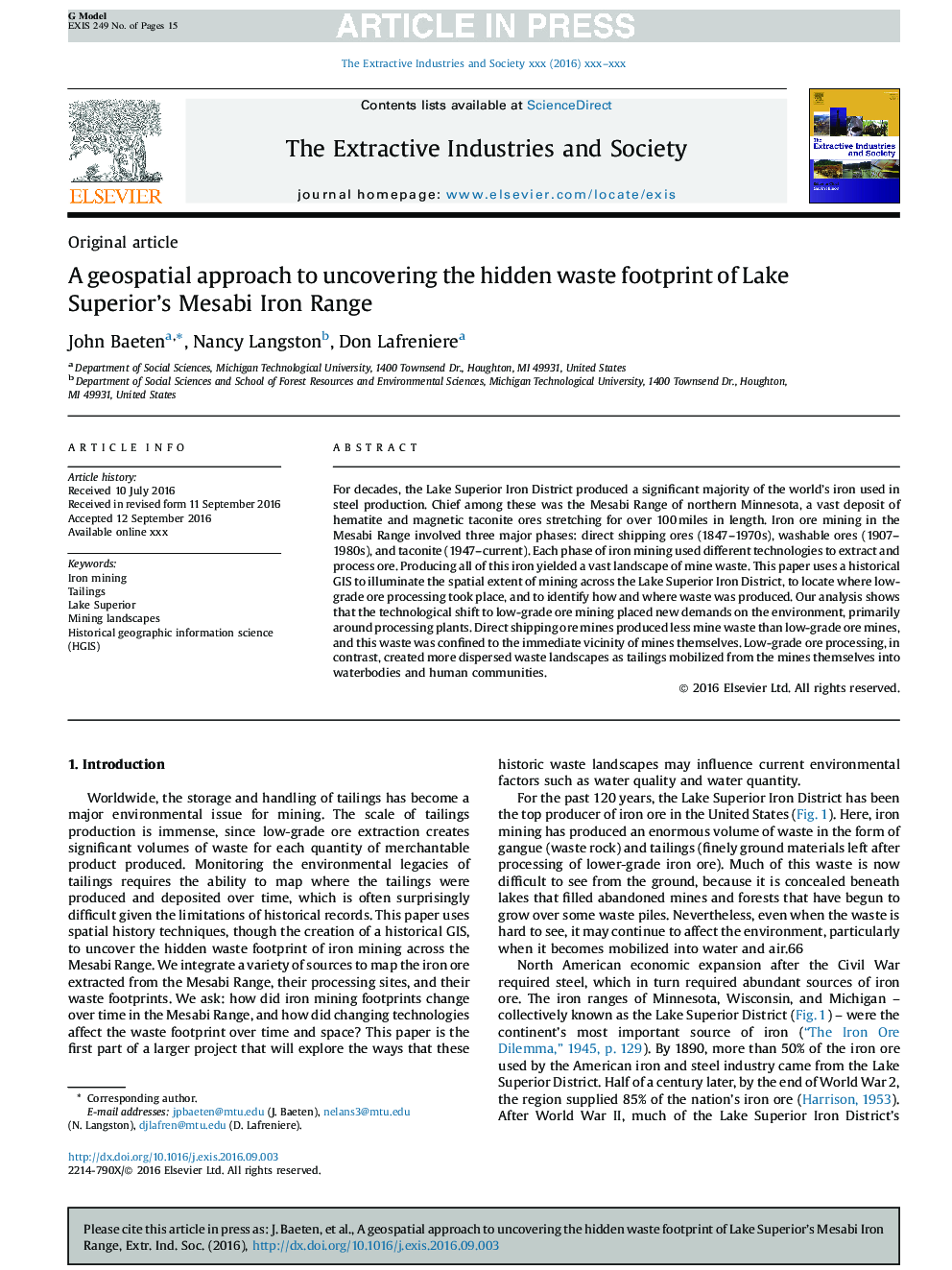| Article ID | Journal | Published Year | Pages | File Type |
|---|---|---|---|---|
| 5114431 | The Extractive Industries and Society | 2016 | 15 Pages |
Abstract
For decades, the Lake Superior Iron District produced a significant majority of the world's iron used in steel production. Chief among these was the Mesabi Range of northern Minnesota, a vast deposit of hematite and magnetic taconite ores stretching for over 100Â miles in length. Iron ore mining in the Mesabi Range involved three major phases: direct shipping ores (1847-1970s), washable ores (1907-1980s), and taconite (1947-current). Each phase of iron mining used different technologies to extract and process ore. Producing all of this iron yielded a vast landscape of mine waste. This paper uses a historical GIS to illuminate the spatial extent of mining across the Lake Superior Iron District, to locate where low-grade ore processing took place, and to identify how and where waste was produced. Our analysis shows that the technological shift to low-grade ore mining placed new demands on the environment, primarily around processing plants. Direct shipping ore mines produced less mine waste than low-grade ore mines, and this waste was confined to the immediate vicinity of mines themselves. Low-grade ore processing, in contrast, created more dispersed waste landscapes as tailings mobilized from the mines themselves into waterbodies and human communities.
Keywords
Related Topics
Life Sciences
Environmental Science
Management, Monitoring, Policy and Law
Authors
John Baeten, Nancy Langston, Don Lafreniere,
